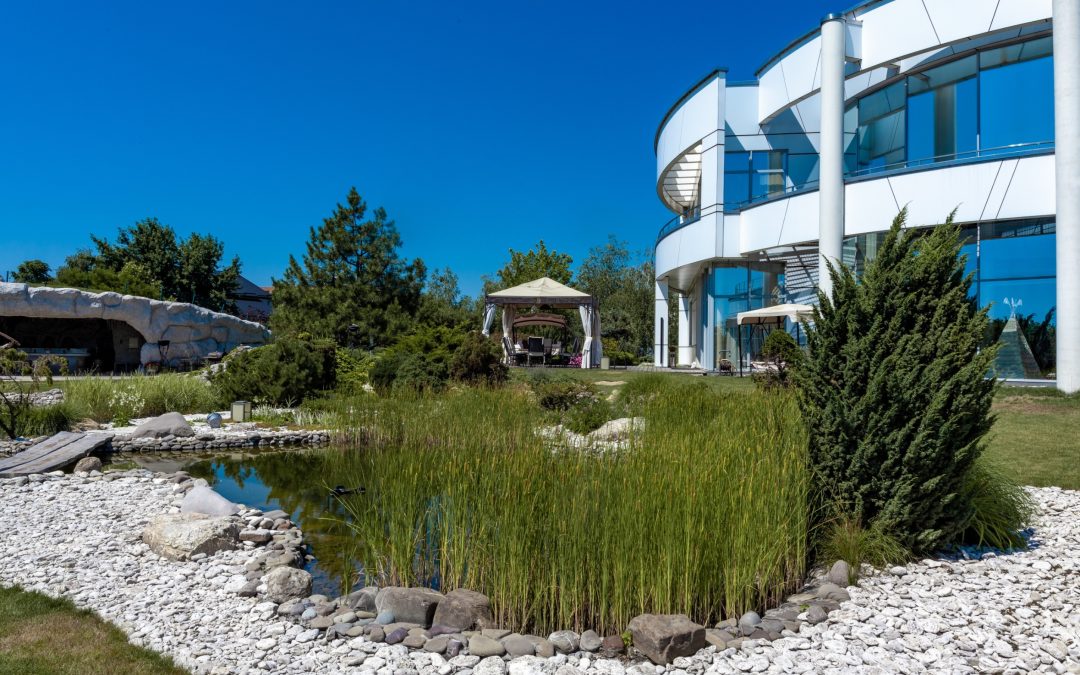Are you thinking about investing some cash in your property but wondering where to begin? Maybe you’ve decided to start outside and have called a couple of landscapers, but you don’t know what they mean when they mention hardscaping and soft landscaping.
In this article, we’ll break down the differences between hardscape and softscape landscaping so that you can make the best decision for your yard.
What is Softscaping?
Softscape landscaping is a type of landscaping that uses plants, flowers, shrubs, and trees to create a beautiful outdoor space using specific arrangements to create aesthetically pleasing designs. Softscaping can also include the use of mulch, rocks, and gravel to create interesting textures and colors.
Softscaping typically uses plants and materials that create a natural and inviting atmosphere. This type of landscaping can be used to create outdoor play areas, ponds, and other outdoor features that can help turn your yard into an outdoor oasis that can be enjoyed by family and friends. It can also help to increase the value of a home as well as provide a lush, green backdrop to a home.
Elements of Softscape Design
Flower Beds or Gardens
These can either be buried in the ground or, if that is not possible, combined with the hard elements in planter boxes. Using flower beds is another lovely way to add color and variety to the area throughout the year, especially if you plant specific flowers that bloom during particular seasons.
Shrubs and Ground Cover
There are other ground covers besides grass that can be used. Shrubs can add a lovely, lower visual element to your yard.
Screens
Fences are not the only way to achieve privacy. Tall hedges and bamboo are two unusual softscape elements that can be used to build screens or barriers to add a touch of privacy.
Mulch
This material can be applied to low-maintenance or unused backyard spaces. Mulch is beneficial because it keeps the soil moist and inhibits weed growth.
What is Hardscaping?
Hardscaping is the use of hard materials in a landscaping project. This can include walkways, patios, retaining walls, edging, and other features made from stone, brick, concrete, pavers, and other hard materials. These materials are durable and often require little maintenance or upkeep. Hardscaping can add a unique element to the landscape, while also providing an area for outdoor activities like barbecues or outdoor seating areas. Hardscaping can also improve the drainage of an area while adding visual interest to the space.
Elements of Hardscape Design
Structures
Gazebos, sheds, and pergolas are all elements of hardscape and can be a great addition to any landscape. They can even help support the growth of vines and other climbing plants.
Pathways
There are many different path surface options to choose from, such as pebbles, bricks, or pavers to stone areas of your yard.
Fences
Fencing doesn’t have to be dull or uninteresting to give you privacy and security. You can use solid walls, picket fences, or even timber slatting creatively to add some flair to your garden.
Patios or Decks
Decks are a beautiful addition to a backyard and divide the space into two clearly defined spaces, whether they are paved with stone or with wood. Decks can be elevated off the ground in a different part of the garden or can be an extension of the house’s interior, next to the back door.
Why Not Combine the Two?
If you have the space, incorporating softscape and hardscape designs into your yard could be a great way to have the perfect outdoor oasis.
Get in touch with the experts at Sarasota Landscaping to find the best landscaping products to bring your landscape design to life.

